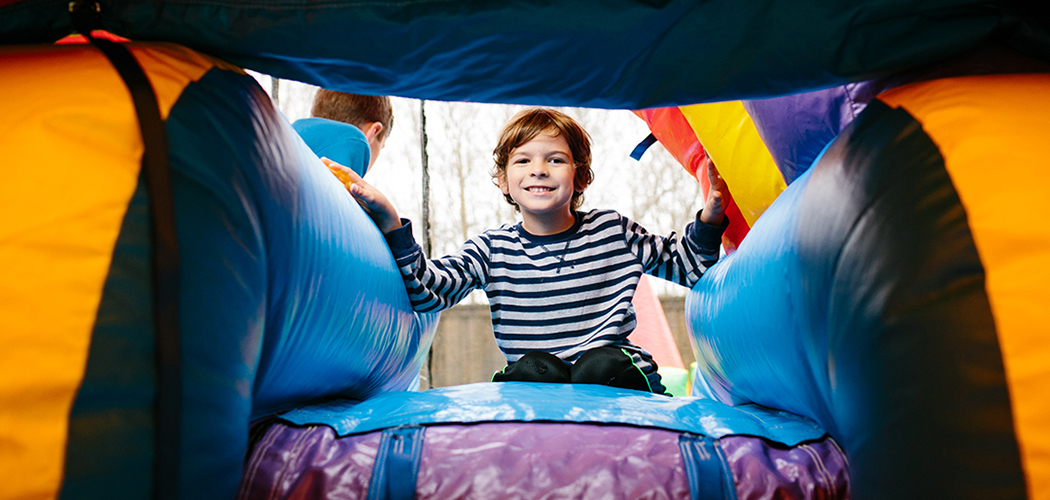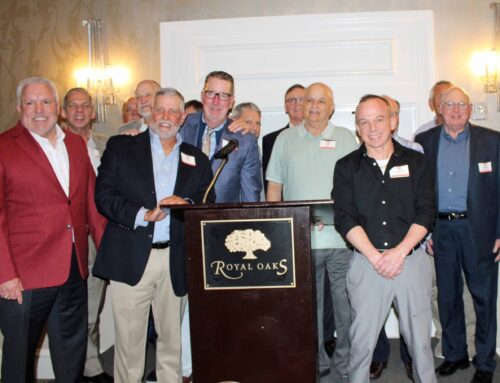What happened to Julian Kampfschulte is a tragedy that defies comprehension.
By the time he died on Oct. 6, the 8-year-old was well known among residents of Lake Highlands and beyond.
Until Julian, most of us — including Julian’s parents, Jenna and Kurt, and sisters Quin and Casey — had never heard of adrenoleukodystrophy (ALD).
[quote align=”right” color=”#000000 “]“When he realized he would no longer be able to see to read his books, he cried.”[/quote]
Now many are uniting to get the word out about the genetic disorder so other families might be saved from its ravages.
Julian’s first-grade teacher at White Rock Elementary, Toyia Crisp, says he was one of her brightest students, when he began experiencing “a little bit of trouble” in the classroom.
He seemed to be having difficulty with both his hearing and sight, his mom says.
But they soon learned the problem was his brain, Jenna says, which was failing to transmit messages from his ears and eyes.
When MRI results indicated adrenoleukodystrophy, Julian’s pediatrician advised they stay calm — they needed to be sure. But Jenna immediately began researching the prognosis and, she says, things fell chillingly into place.
ALD, an X chromosome-linked disorder that occurs primarily in boys, progressively damages myelin, which protects the nerves of the brain and spinal cord. Victims gradually lose the capacity to see, hear, eat and walk. Death soon follows.
“There was a lot of denial in there. We knew more or less what was going to happen, but we didn’t know exactly how it would unfold,” Kurt says. “Every case is a little different.”
For three months or so after the diagnosis, though Julian’s hearing was deteriorating, nothing else happened. Julian, his family, classmates and teachers learned sign language, awaited the inevitable, prayed for a miracle.
Toward the end of February, Julian’s vision started to go, Kurt says, “and it went pretty fast, over the course of like three weeks.”
Blinking back tears, Jenna recalls the first time Julian seemed truly anguished. “When he realized he would no longer be able to see to read his books, he cried.”
Crestfallen classmates, friends, neighbors and strangers conceived creative attempts to console and support the Kampfschultes. Many helped organize a holiday party complete with bounce slides, Santa and gingerbread houses; volunteer photographers from local nonprofit Fotolanthropy documented the day. Brazos Films produced a short film, “Snuggle Julian,” about Julian’s plight. Julian’s aunt, Katy Dilland, launched an organization by the same name. The images of Julian — his laughter, his tears, his tiny schoolmates gathered around him, guiding him to class, communicating with him by sign language — spread like wildfire and drew TV news reporters to his door.
At the September meeting of the 100 Women of Lake Highlands (200-plus women who pool $100 each quarter to donate to one local cause), several charities in the running for the $22,000 pool ceremoniously, one by one, withdrew their ballots from consideration, instead requesting that all funds go to Julian.
“This was no small gesture as the amount undoubtedly would make a huge difference for any organization,” 100 Women president Crispin Deneault says.
Those who gave did not care how the family used the money, which they say they divided between vacations, gatherings with loved ones, time off for Julian’s caretakers, hospital and funeral expenses, grief counseling, helping other ALD families and lobbying for ALD prevention.
People paying attention to the Kampfschultes’ journey felt powerless. Because nothing else could be done, we pulled out our wallets.
“We can’t possibly know the depths of their struggle,” Deneault says, “but hope in some small way the gesture gave a wonderful family a moment of peace.”
Two nights before he died, children gathered outside Julian’s window and sang “Amazing Grace,” a deed that Julian could not see or hear, but maybe felt.
A month after his memorial service, rainbow-colored bows hug tree trunks and street signs throughout the Kampfschultes’ White Rock Valley neighborhood.
When we speak, Jenna says she’s ready for the ribbons’ removal.
“They are sad. But I’m not sure Kurt wants them to come down yet. We have our own ways of dealing.”
On the important things, though, they agreed — like when they both realized and accepted that extreme medical treatment was not an option for their son.
After meeting with specialists in Houston who suggested a bone marrow transplant, they weighed the option and decided on a different course of action.
Both by now were well-read on therapeutic prospects, and they sought the opinion of Westin Miller, a foremost New York doctor specializing in bone marrow transplants and treating ALD. More straightforward about their options, he made clear that a bone marrow transplant would do little to improve Julian’s condition, it couldn’t save him, and it would cost millions.
Jenna and Kurt opted instead to dedicate all the time they had left to enjoying their sensitive, funny, creative and humble son — embracing his too-small yet beautiful life, they say, and showing him how much they love him.
As the old saying goes: Instead of counting the days, they would make the days count.
Accepting others’ generosity on behalf of Julian, the family swam with dolphins in the Hawaiian ocean, courtesy of the Make A Wish Foundation; played with penguins and polar bears, thanks to the Dallas Zoo; caught a show at Medieval Times; traveled to Michigan; snow skied and stuck together.
Jenna and Kurt met fellow parents of terminally ill children. They learned and advocated. Talking to family, Jenna discovered two distant relatives had died from symptoms that resembled ALD, though no one knew what to call it back then.
“It came from my mom’s side of the family … from me. Women who have the defective gene are carriers,” Jenna explains.
That means Julian’s sisters could carry it too and will be tested before they ever consider having children.
There is no cure for ALD. It can be treated, but only if detected before symptoms appear.
Mandatory testing at birth is the most sensible way to prevent its fatal progression, most experts agree.
The Secretary of the Department of Health and Human Services in February 2016 approved the addition of ALD to the list of genetic diseases suggested for newborn screening. In June, The Texas Newborn Screening Advisory Committee — after Jenna and a friend traveled to Austin to share Julian’s experience — unanimously recommended to the Texas Department of State Health Services that ALD testing be added to the state panel.
But Texas still has not secured funding to screen newborns for adrenoleukodystrophy. Lawmakers will have an opportunity to nail down the needed capital in January.
Thousands of people from our area have sent letters to Gov. Greg Abbott, asking him to make sure that, during the 85th Texas legislative session this month, the money becomes available.
ALD is present in one in 17,000 births. “In Texas, there are diseases they test for that are much more rare than ALD,” Jenna says.
In our state, about 24 children a year are born with the defective gene that leads to ALD. About 10 of those will develop the disease in childhood, like Julian. Most of the remaining males will develop an adult version called AMN, which also is incurable and debilitating.
Three states, New York, New Jersey and California, already have established procedures and launched newborn screening.**
“Texas just needs funding to implement testing. The protocol is there, but the longer it takes, the greater the chance that other boys will die,” Jenna says. “In cases where they catch it early enough, the bone marrow transplant can work. Kids who proceed that way have led normal lives.”
The action and camaraderie has helped, though Julian’s family frequently feels that life is a waking nightmare.
“Last year we all prayed so hard at the Thanksgiving table that God would heal him, and we had no idea if we would spend the next one with or without him,” Jenna recalls.
Since their brother’s death, Casey, 11, and Quin, 4, have attended bereavement camps and counseling, thanks in part to those donations last year to the “Snuggle Julian” foundation.
Kurt, who works at a fitness center in Lake Highlands, explains that grief is like a weighted vest. You wear it around and start to get used to it.
“But some days you suddenly feel its full weight crushing you, and all you can do is suffer under its heaviness,” Kurt says.
The support of family and neighbor has made it easier to bear.
“Though I don’t always want to be known as the mom who lost her boy,” Jenna adds, “the [notoriety] is the price you pay for all the love you got — that’s something we’d never trade.”
Correction: We noted in the story that three states, New York, New Jersey and California, already have established procedures and launched newborn screening for ALD. Another state, Connecticut, officially started screening for ALD on July 1, 2016 after initiating the validation in October 2015. All infants born in Connecticut as of Oct. 1, 2015 have been screened for ALD. Infants with ALD who have been identified through the newborn screening for ALD in Connecticut receive ongoing testing to ensure they get treatment prior to onset of disease. Connecticut was the second state in the nation to start newborn screening for ALD. Thanks to a reader in Connecticut for pointing this out.








